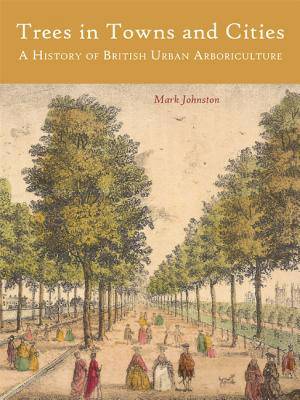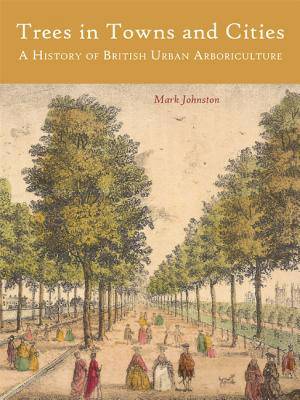
- Retrait gratuit dans votre magasin Club
- 7.000.000 titres dans notre catalogue
- Payer en toute sécurité
- Toujours un magasin près de chez vous
- Retrait gratuit dans votre magasin Club
- 7.000.000 titres dans notre catalogue
- Payer en toute sécurité
- Toujours un magasin près de chez vous
Trees in Towns and Cities
A History of British Urban Arboriculture
Mark Johnston
Livre broché | Anglais
66,95 €
+ 133 points
Description
This is the first book on the history of trees in Britain's towns and cities and the people who have planted and cared for them. It is a highly readable and authoritative account of the trees in our urban landscapes from the Romans to the present day, including public parks, private gardens, streets, cemeteries and many other open spaces. It charts how our appreciation of urban trees and woodland has evolved into our modern understanding of the many environmental, economic and social benefits of our urban forests. A description is also given of the various threats to these trees over the centuries, such as pollution damage during the Industrial Revolution and the recent ravages of Dutch elm disease. Central and local government initiatives are examined together with the contribution of civic and amenity societies. However, this historical account is not just a catalogue of significant events but gives a deeper analysis by exploring fundamental issues such as who owned those treed landscapes, why they were created and who had access to them. The book concludes with the fascinating story of how trees have contributed to efforts to improve urban conditions through various 'visions of urban green' such as the model villages, garden cities, garden suburbs and the new towns.
Studies in garden and landscape history have often been preoccupied with those belonging to the rich and powerful. This book focuses particularly on working people and the extent to which they have been able to enjoy urban trees and greenspace. It will appeal to a general readership, especially those with an interest in garden history, heritage landscapes and the natural and built environment. Its meticulous referencing will also ensure it is much appreciated by students and academics pursuing further reading and research. It is written by an internationally renowned arboriculturist who combines a passion for trees with a sound understanding of British social and cultural history.
Studies in garden and landscape history have often been preoccupied with those belonging to the rich and powerful. This book focuses particularly on working people and the extent to which they have been able to enjoy urban trees and greenspace. It will appeal to a general readership, especially those with an interest in garden history, heritage landscapes and the natural and built environment. Its meticulous referencing will also ensure it is much appreciated by students and academics pursuing further reading and research. It is written by an internationally renowned arboriculturist who combines a passion for trees with a sound understanding of British social and cultural history.
Spécifications
Parties prenantes
- Auteur(s) :
- Editeur:
Contenu
- Nombre de pages :
- 256
- Langue:
- Anglais
Caractéristiques
- EAN:
- 9781909686625
- Date de parution :
- 31-08-15
- Format:
- Livre broché
- Format numérique:
- Trade paperback (VS)
- Dimensions :
- 185 mm x 246 mm
- Poids :
- 748 g







